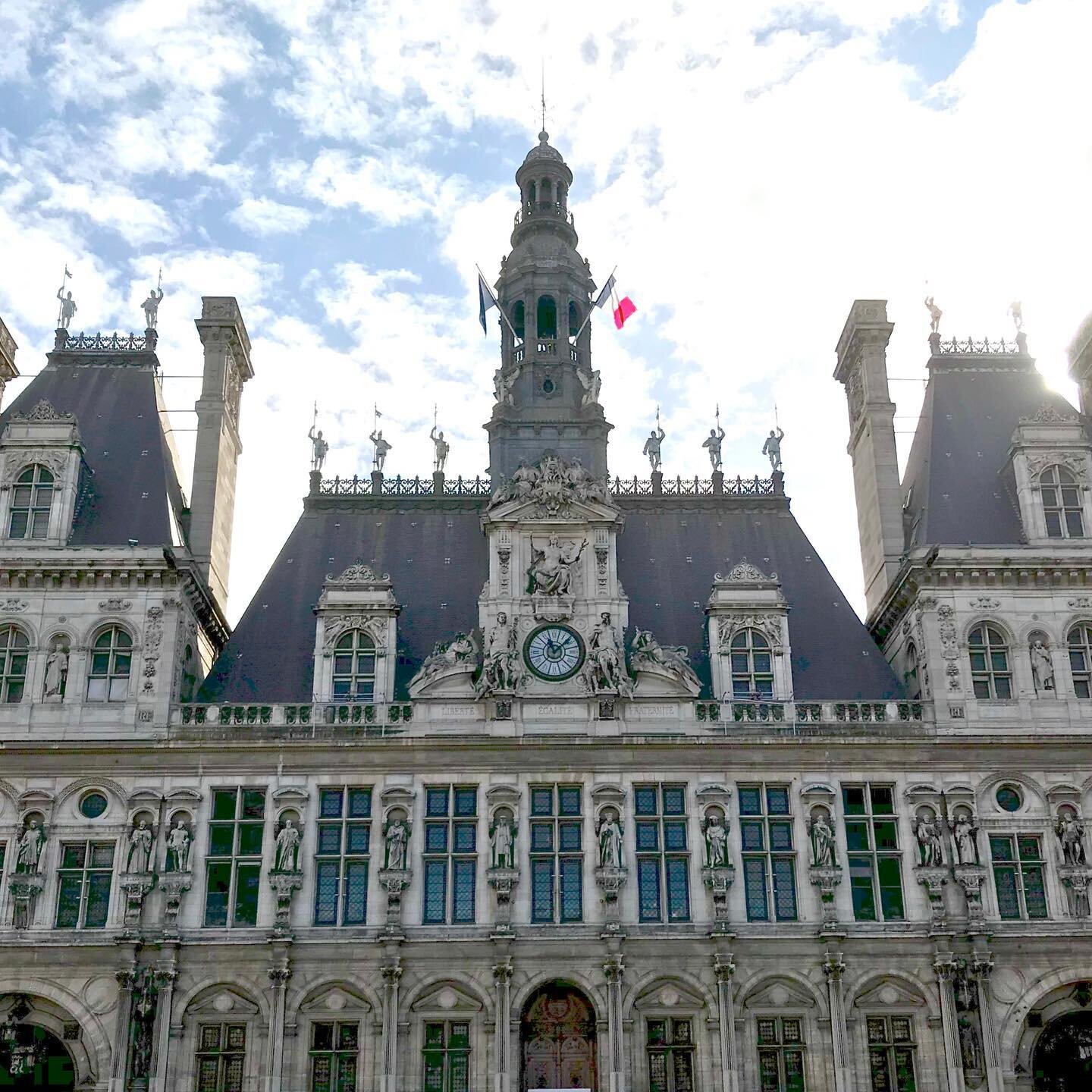

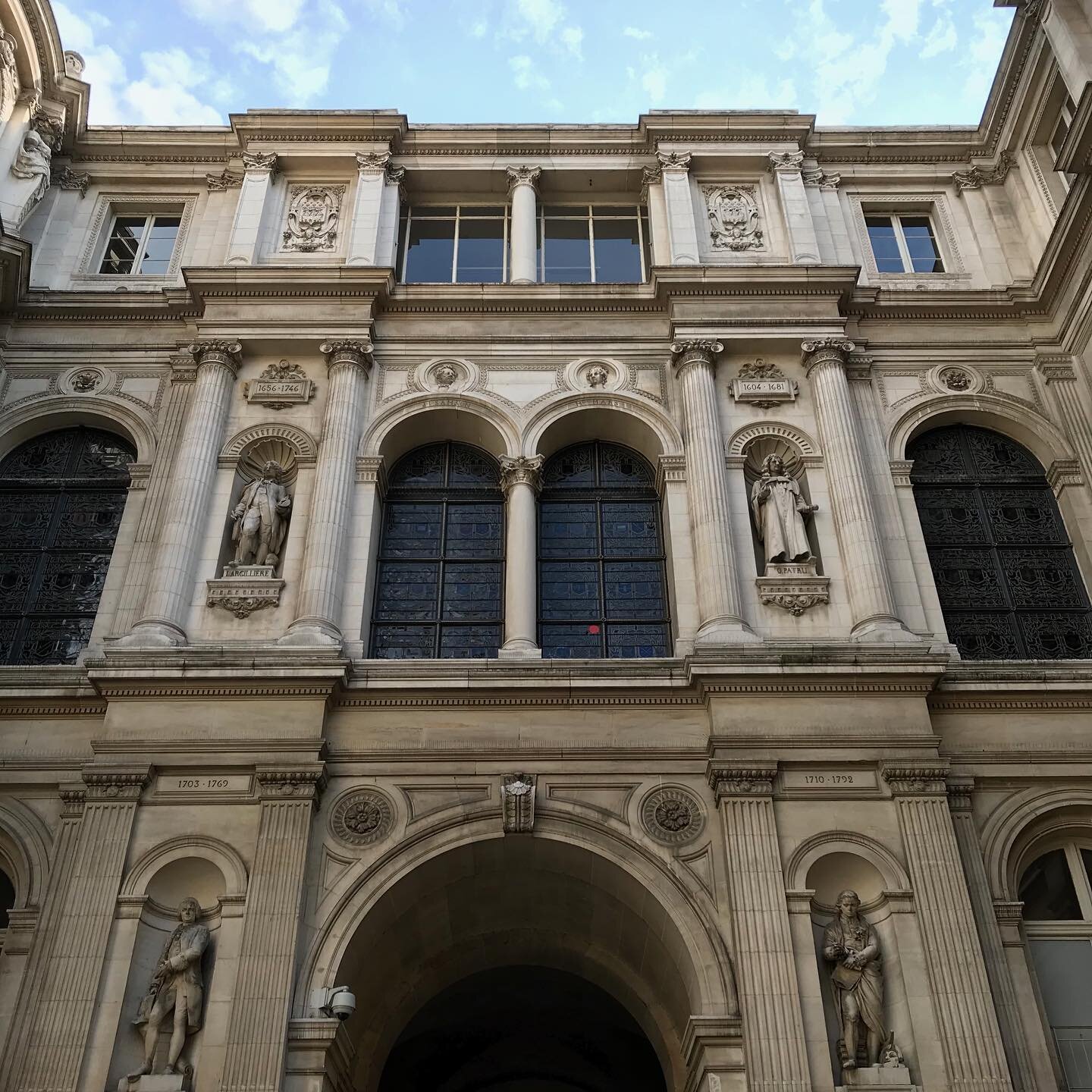

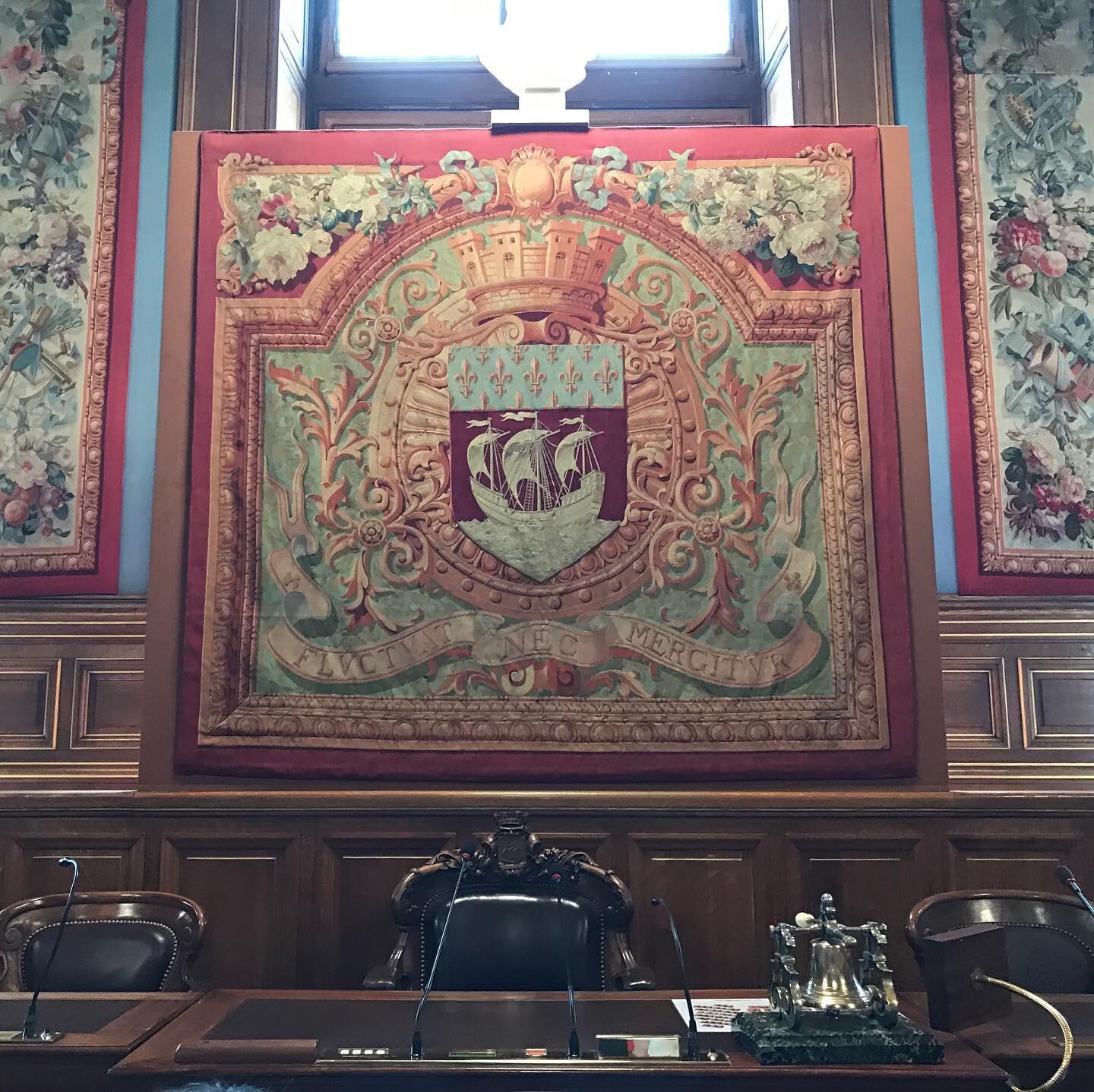
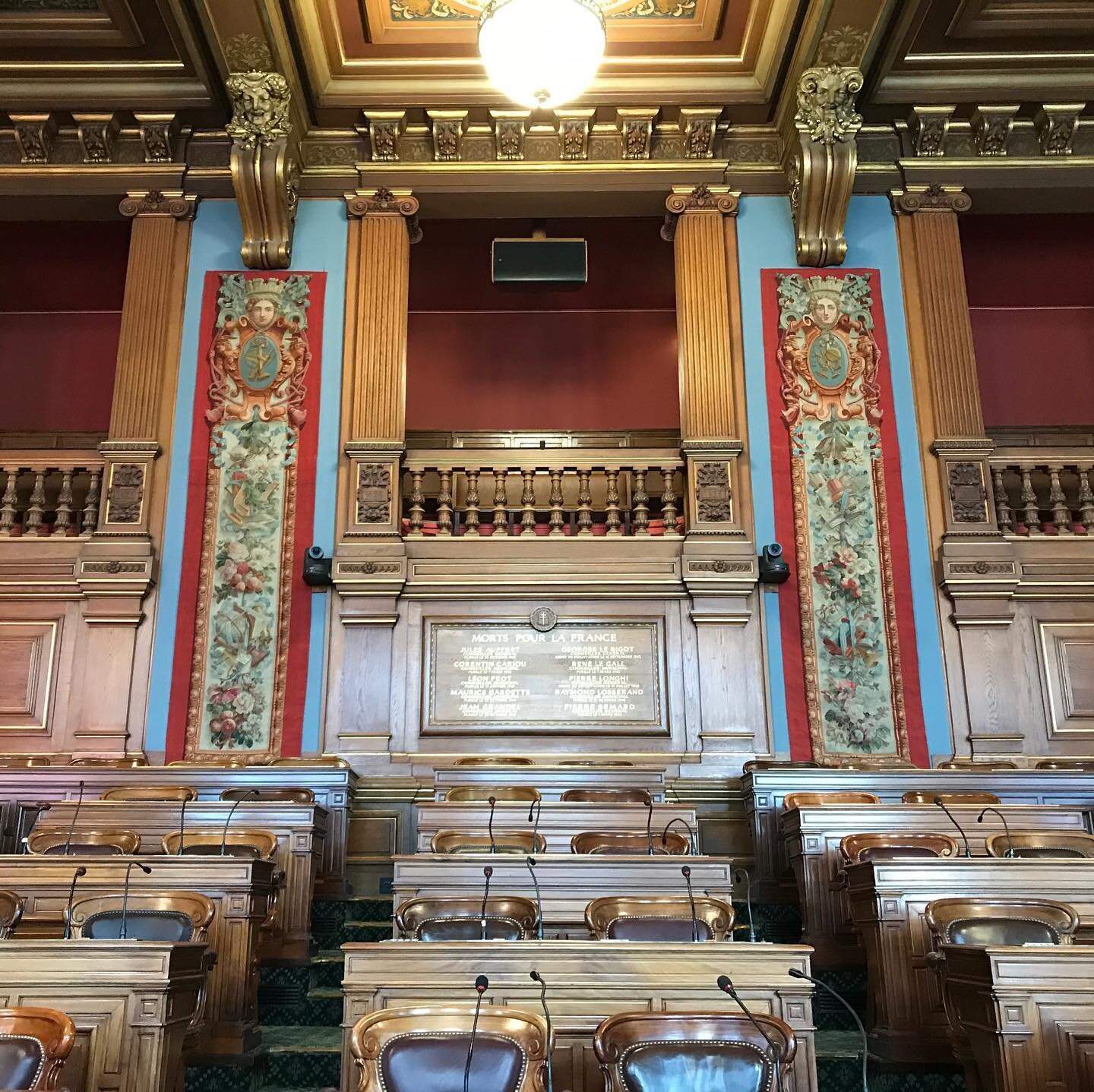
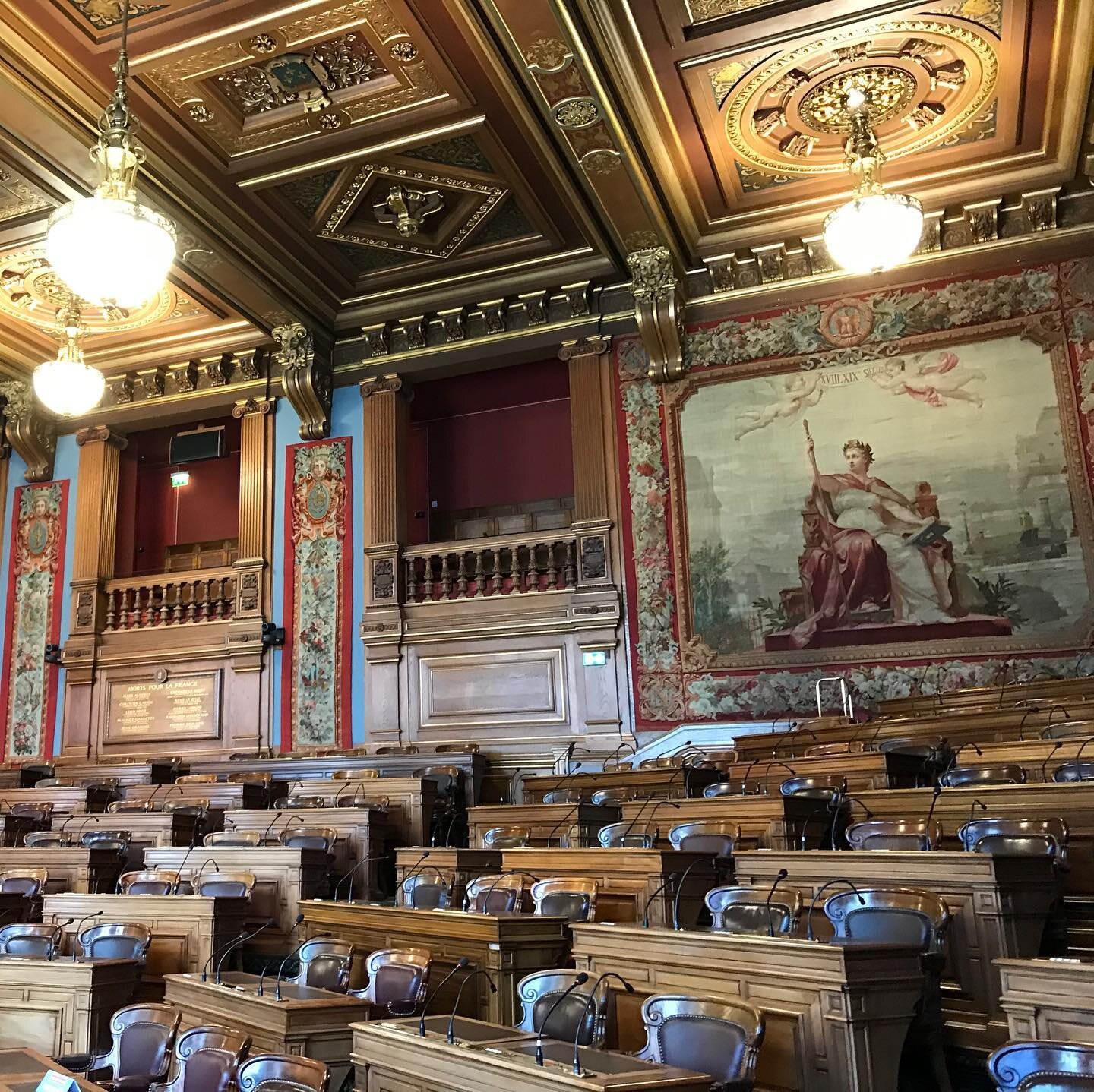
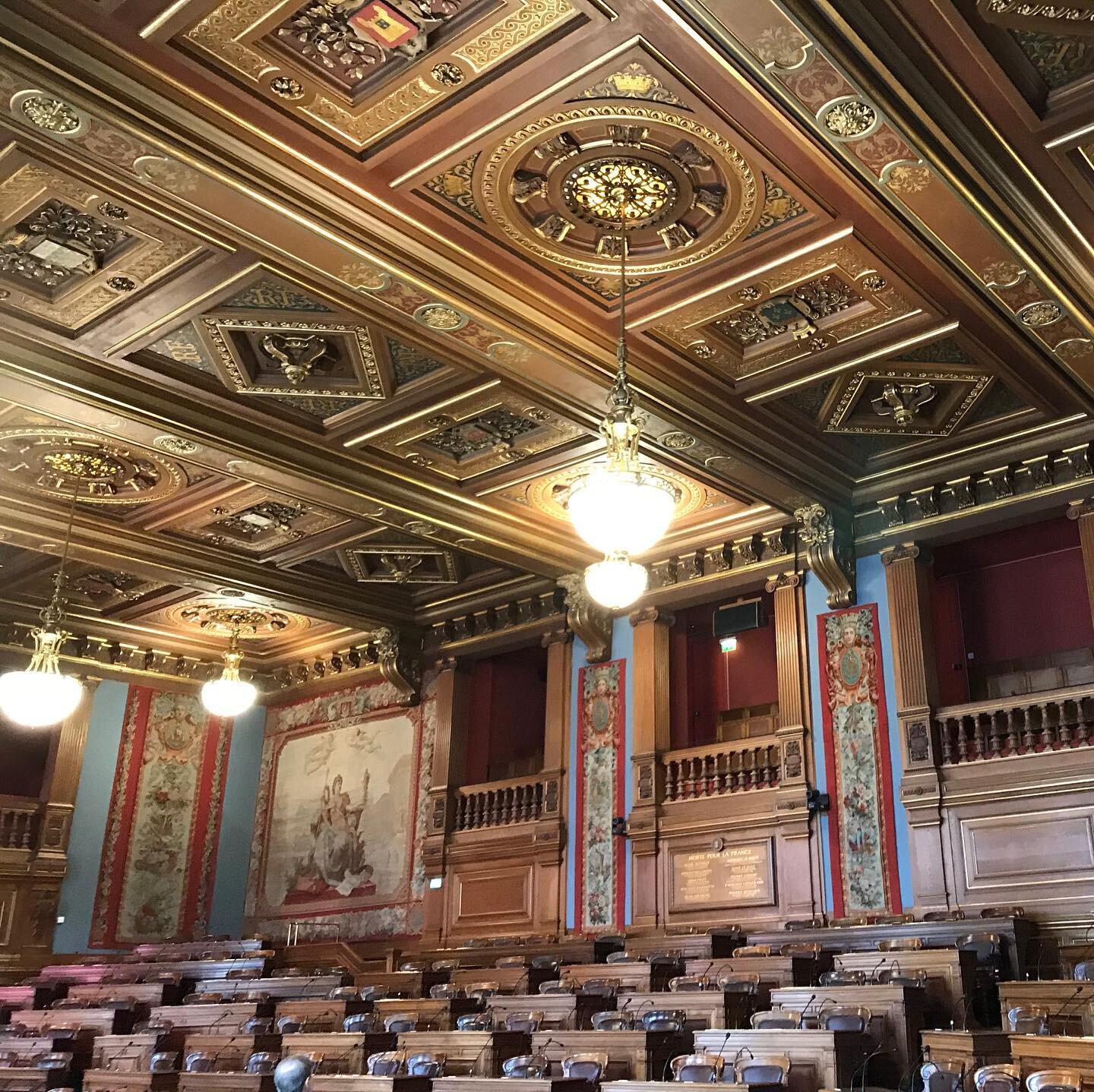
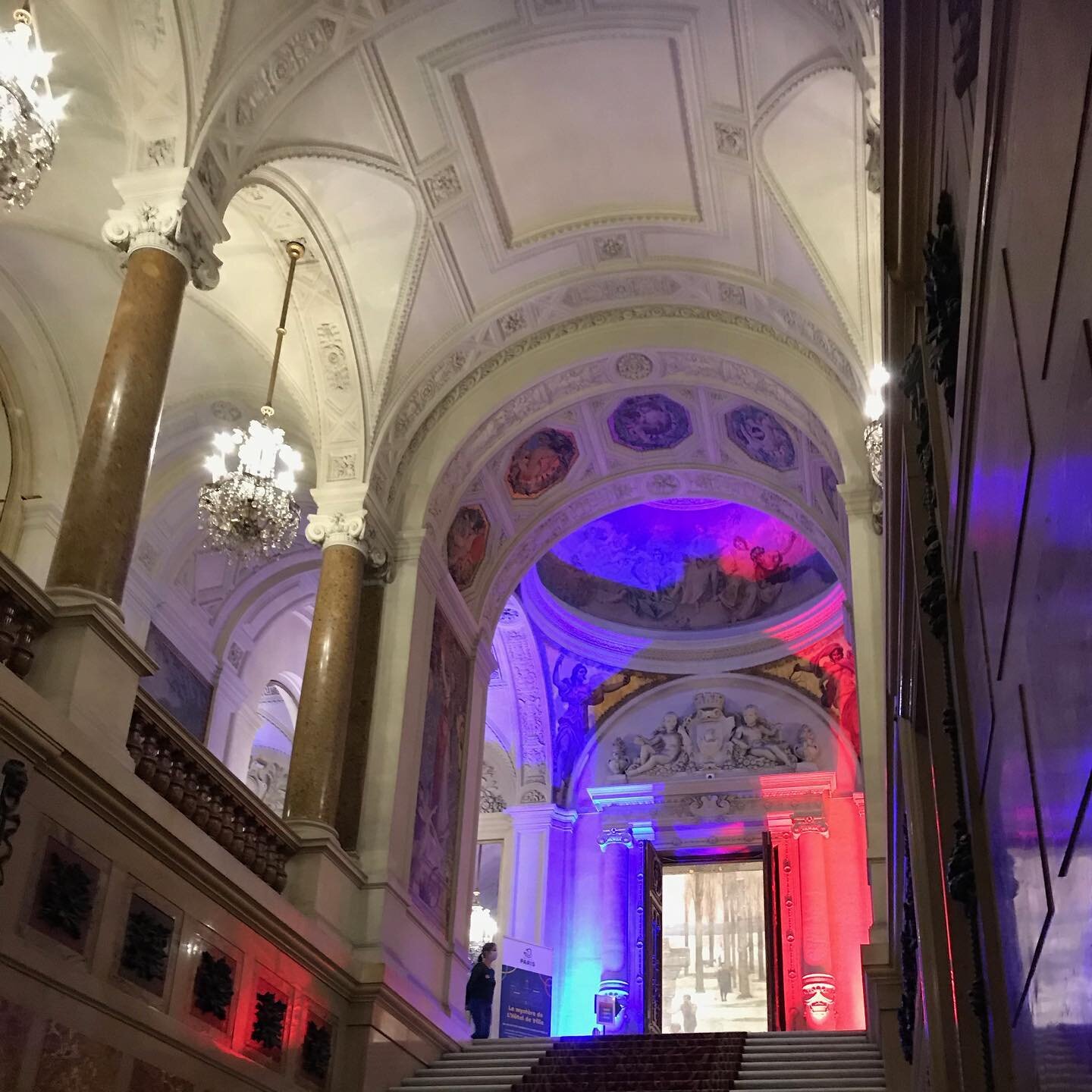
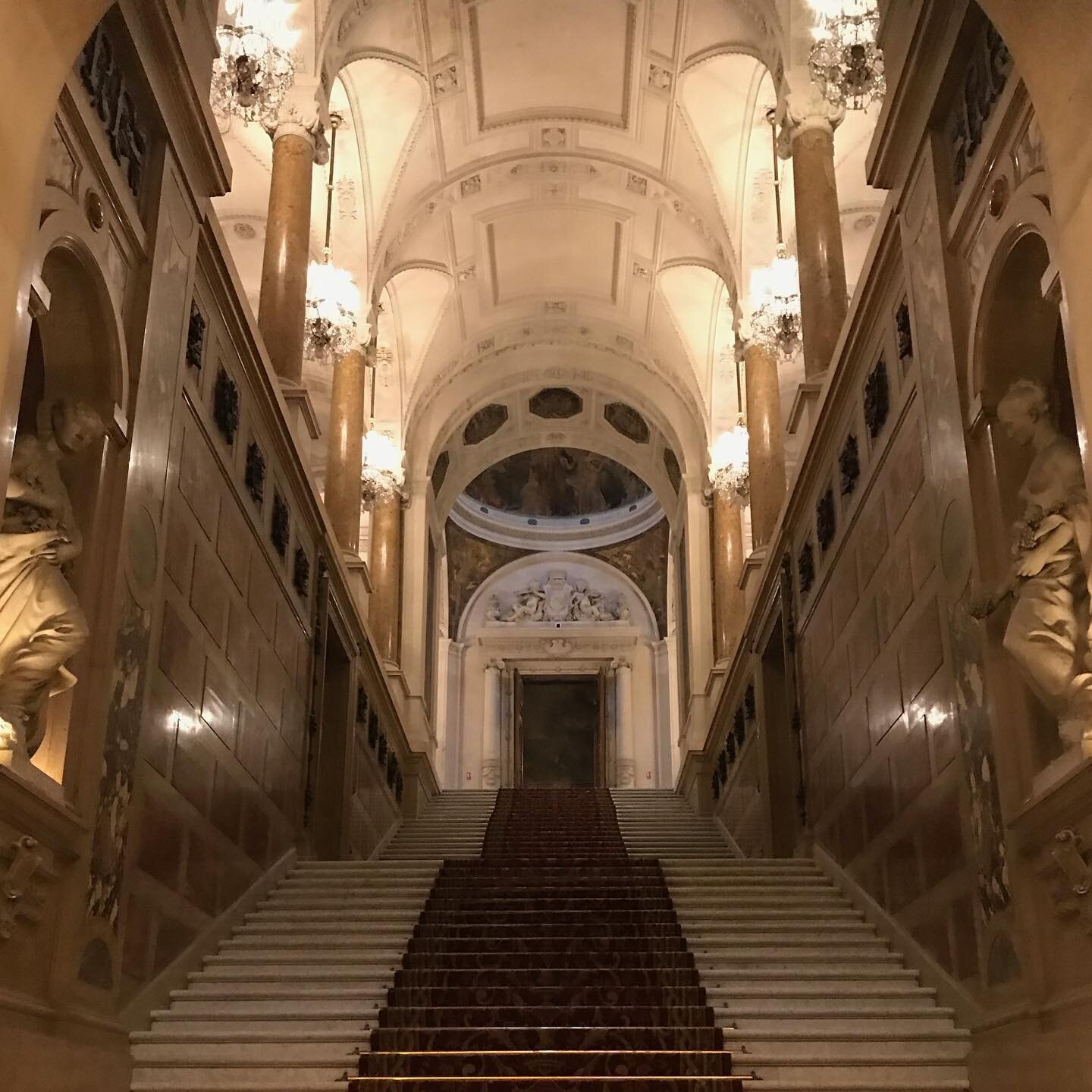
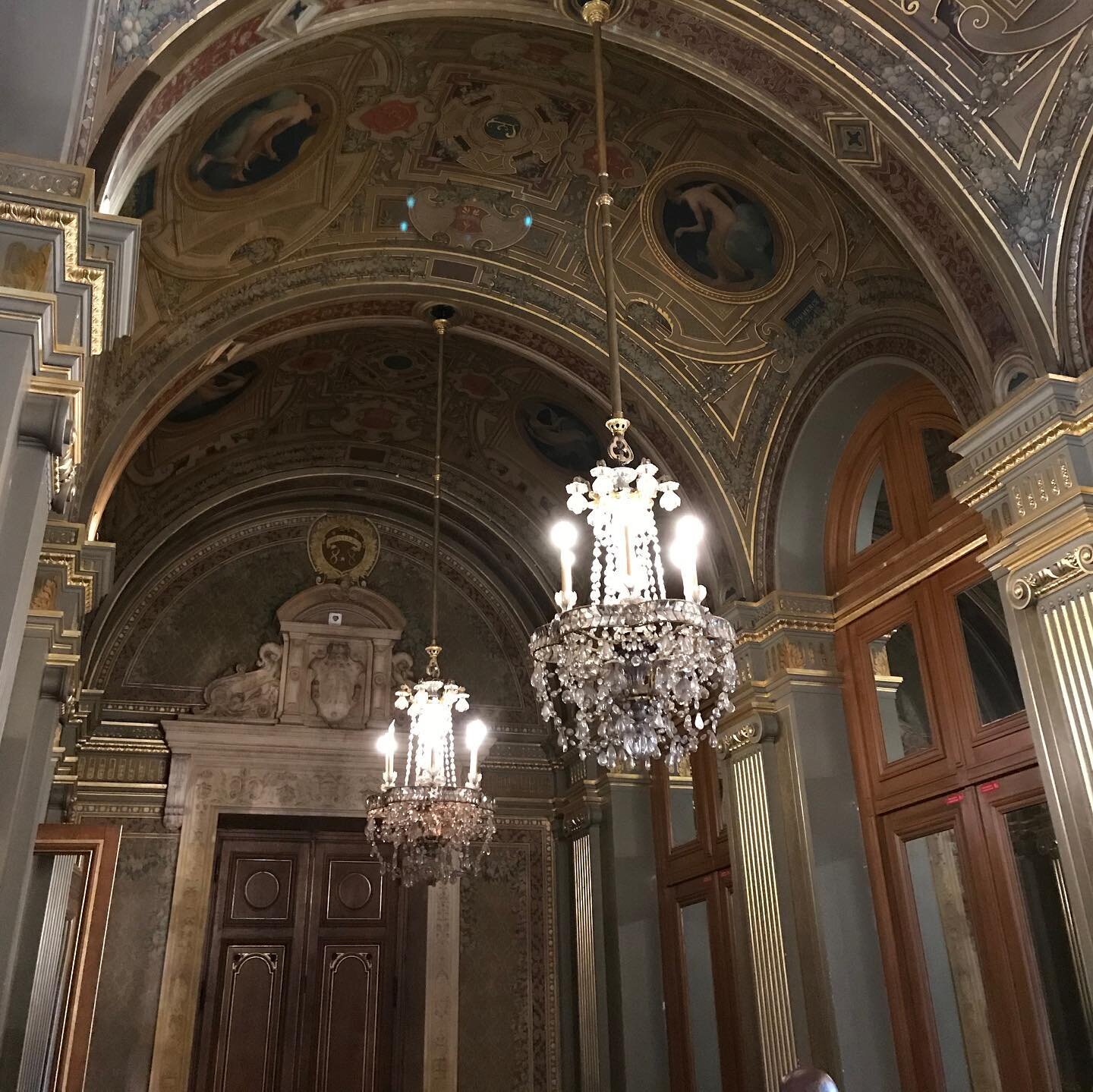
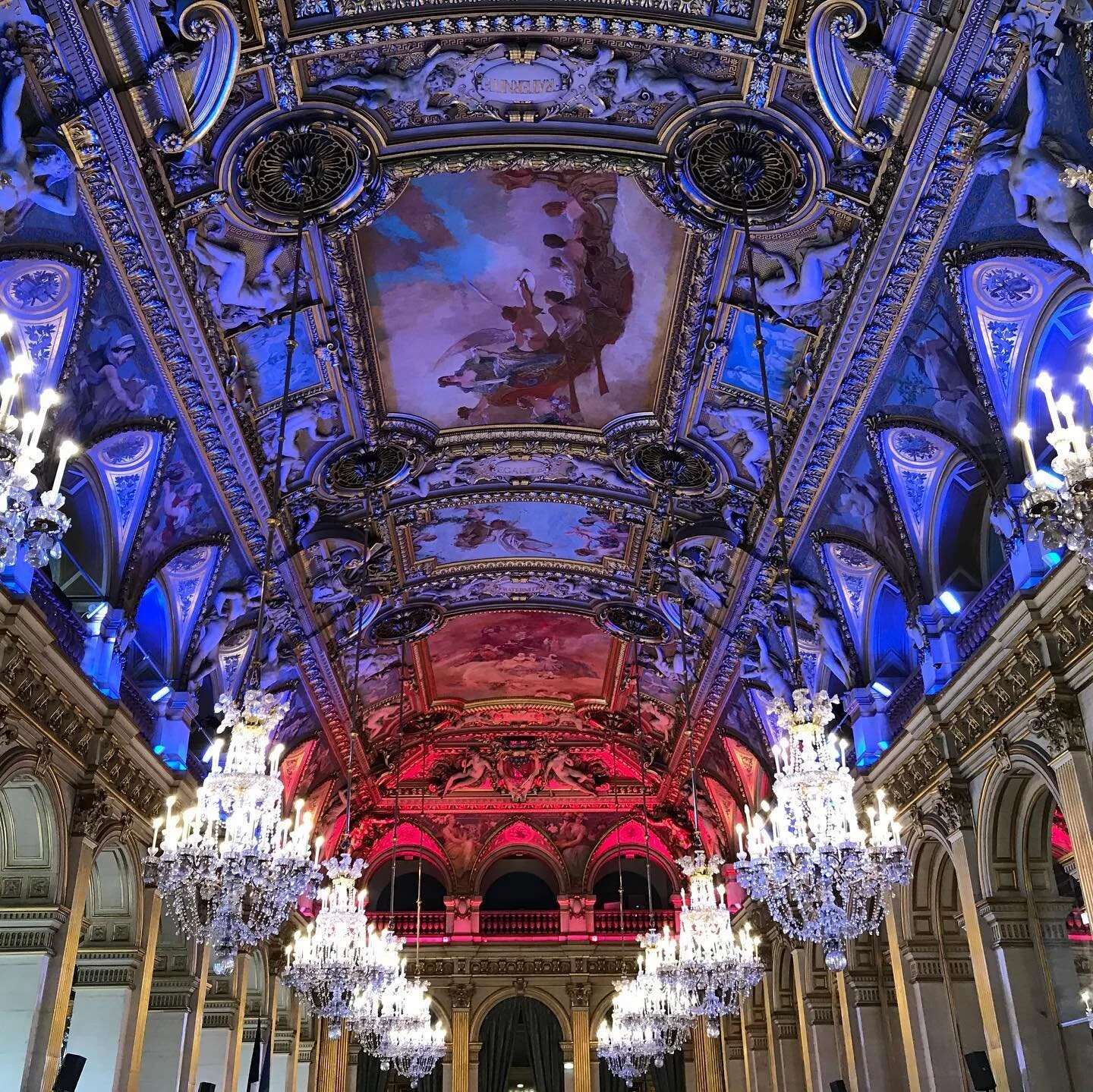
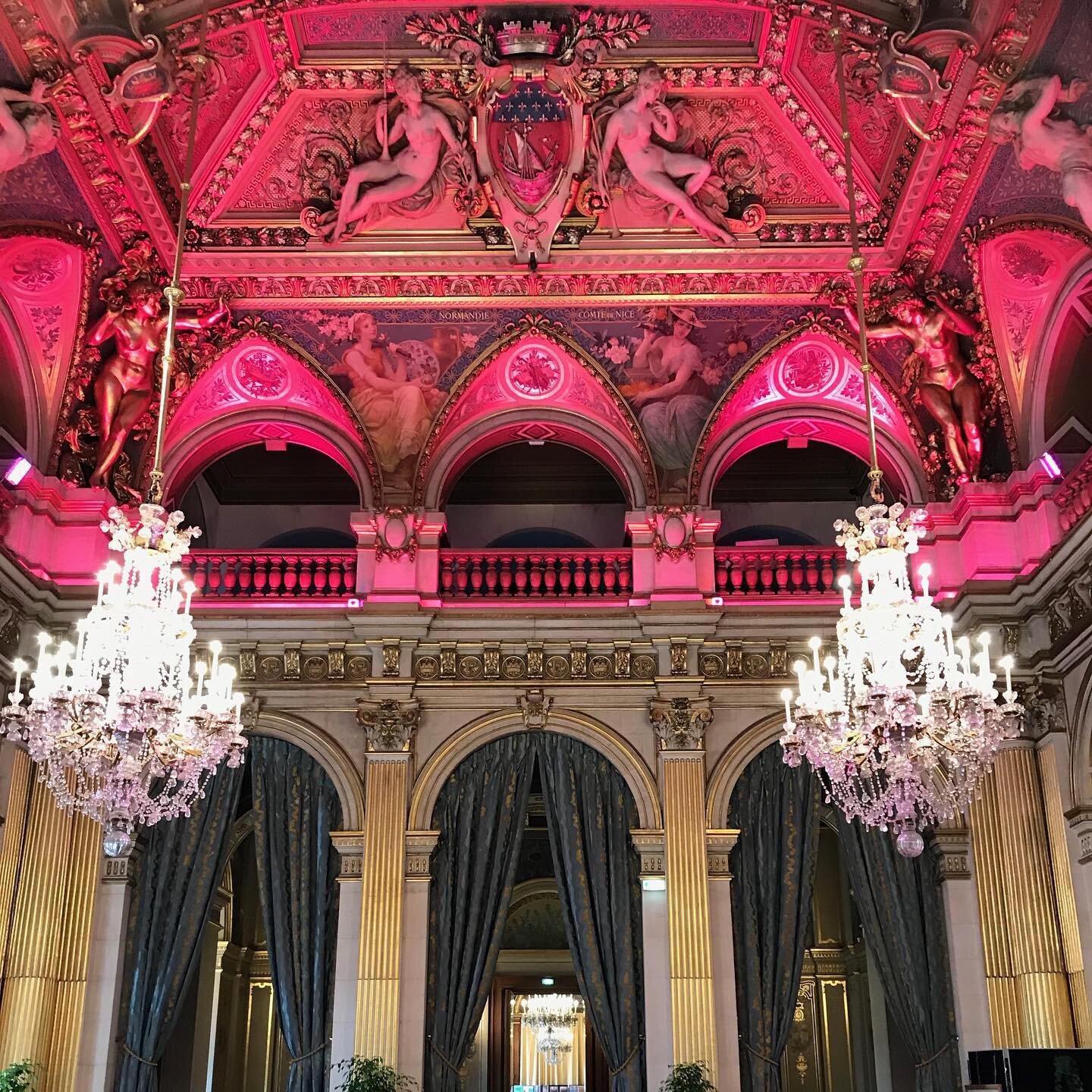
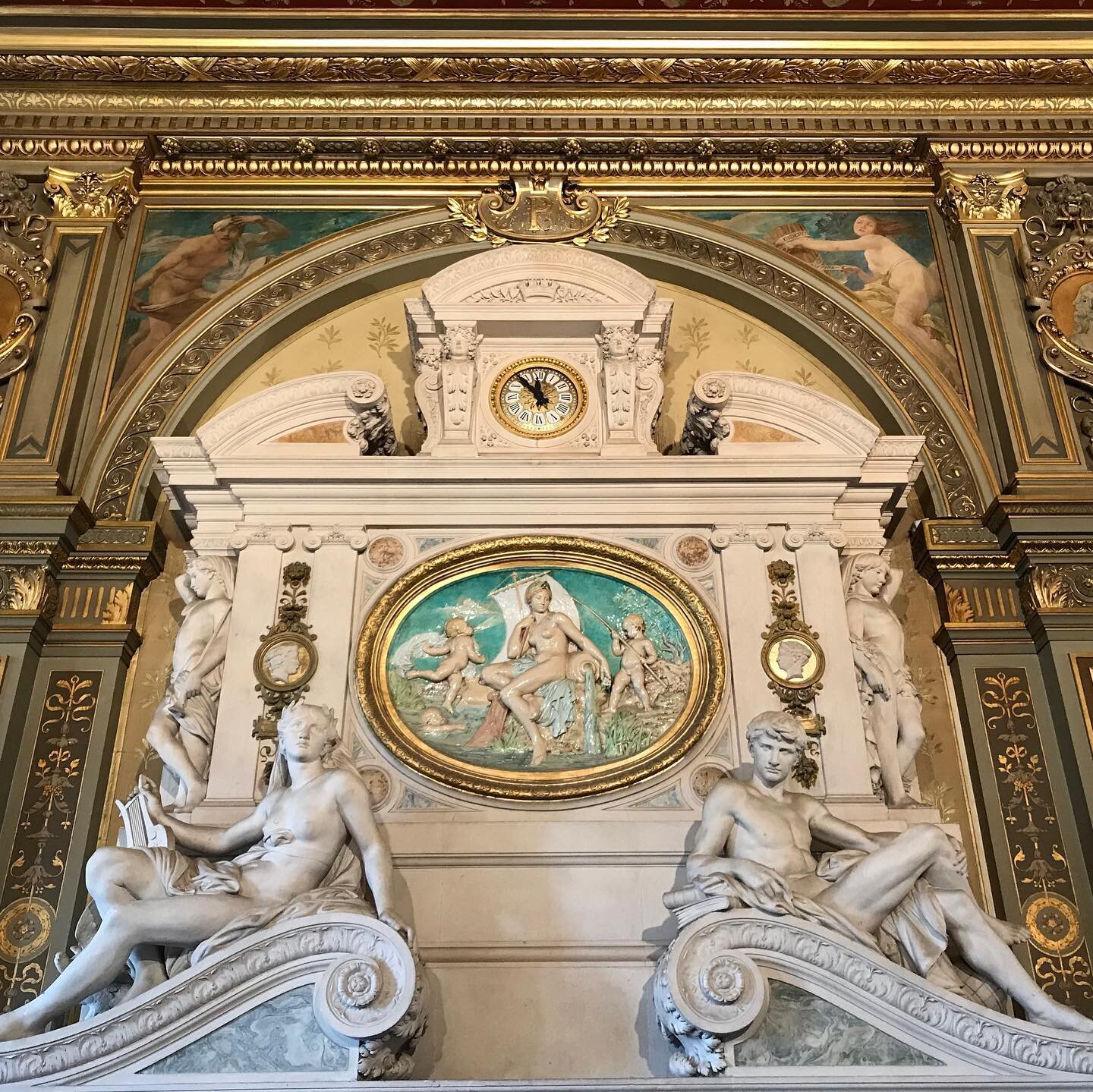
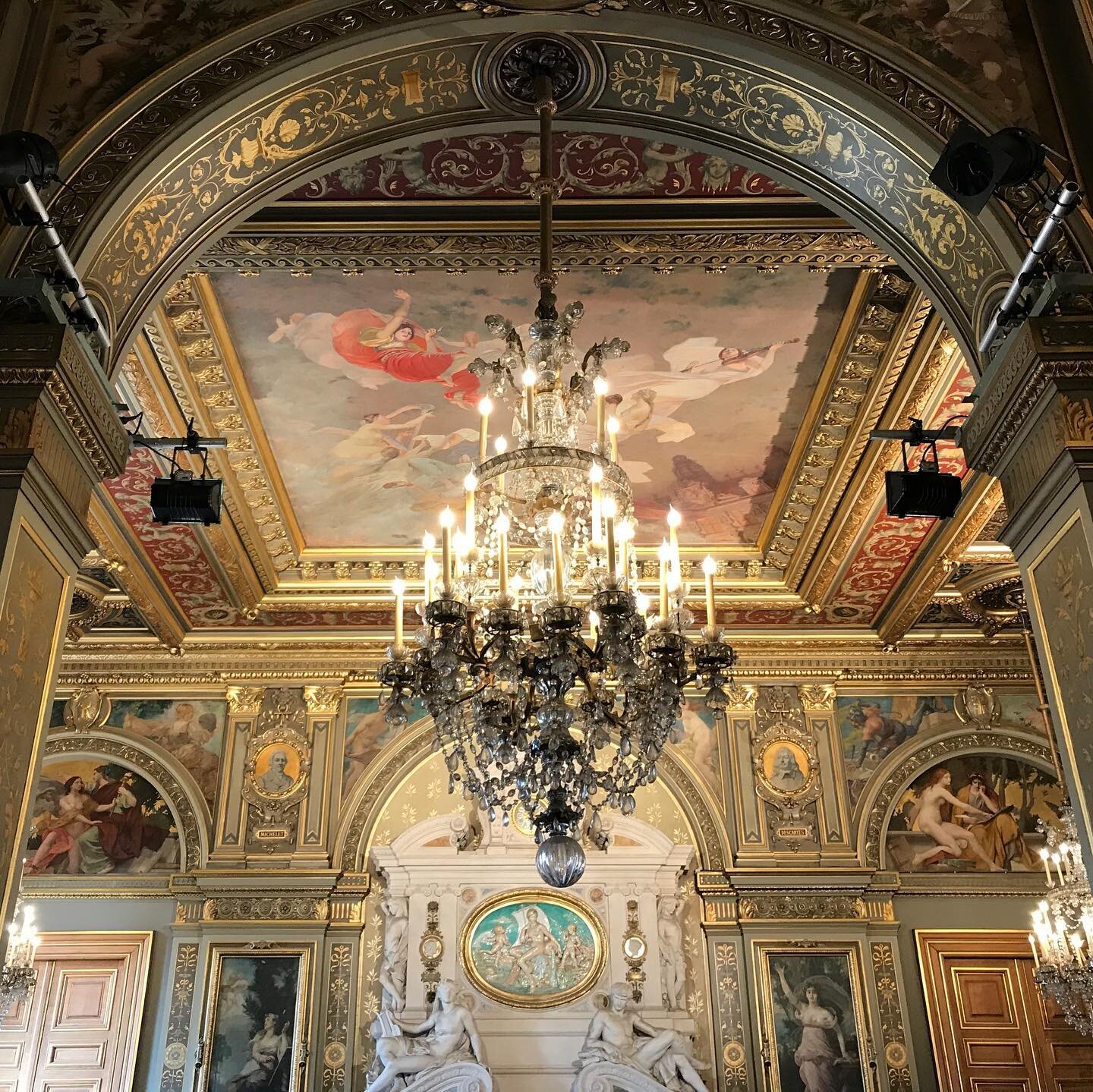
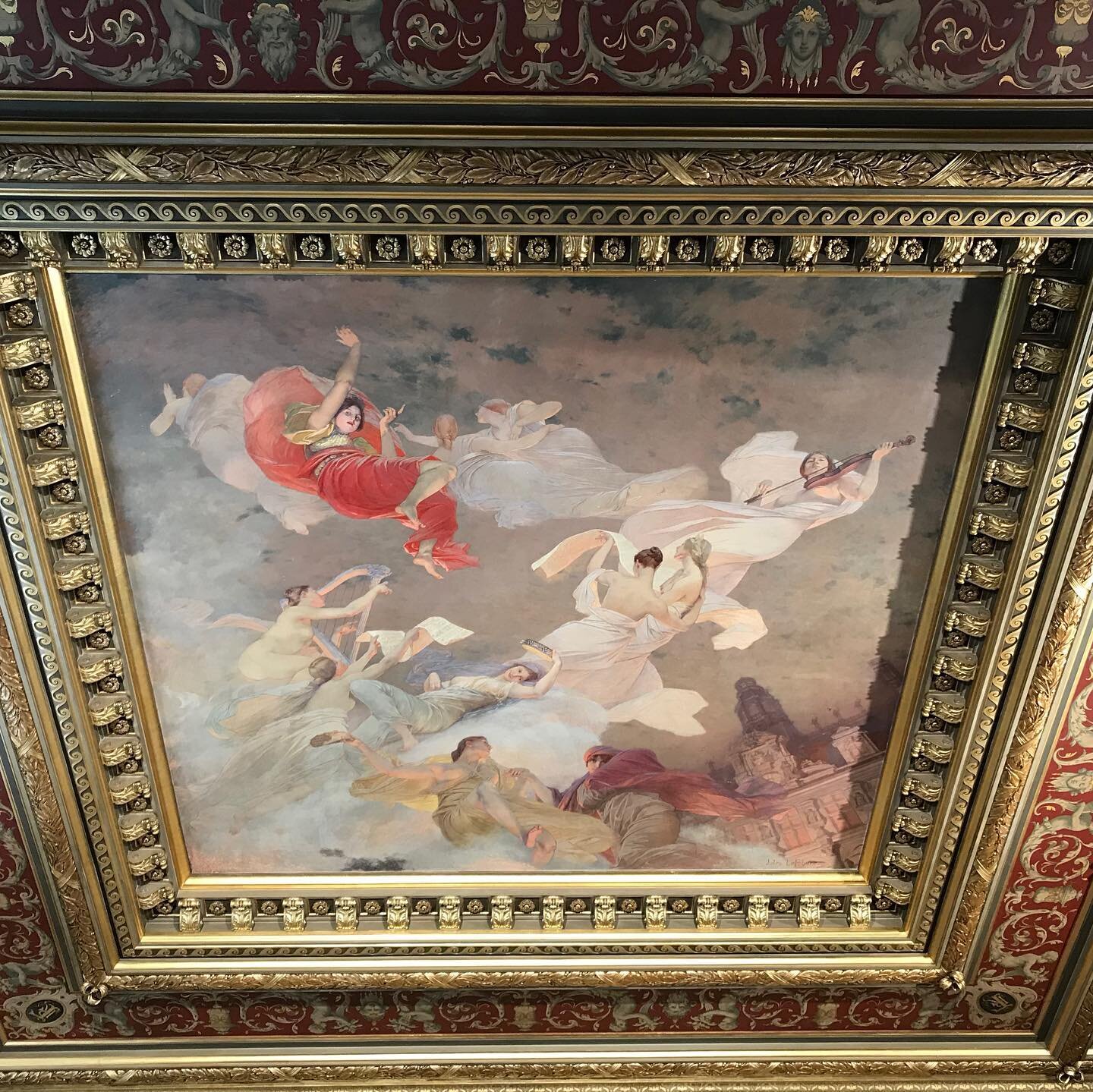
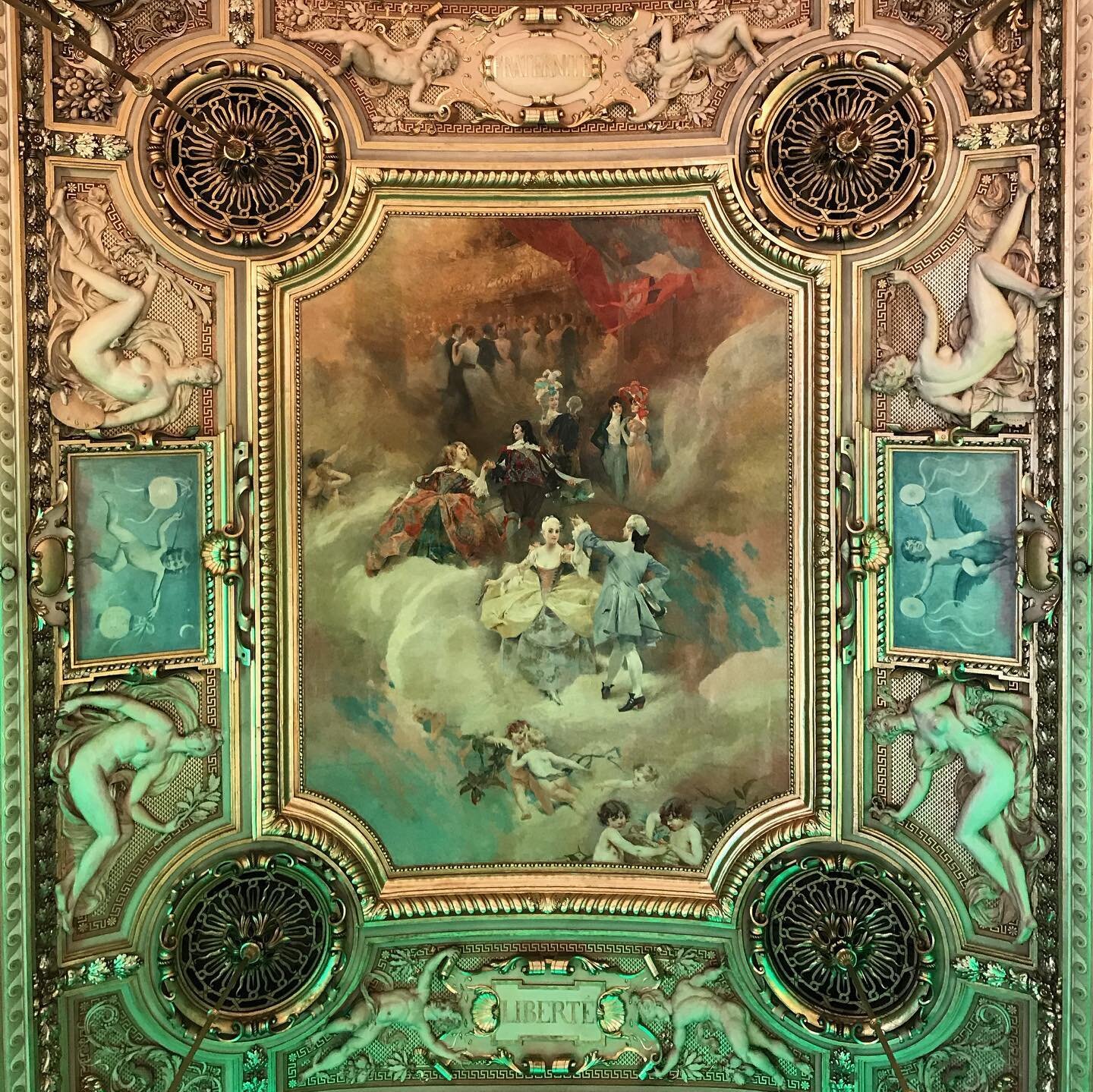

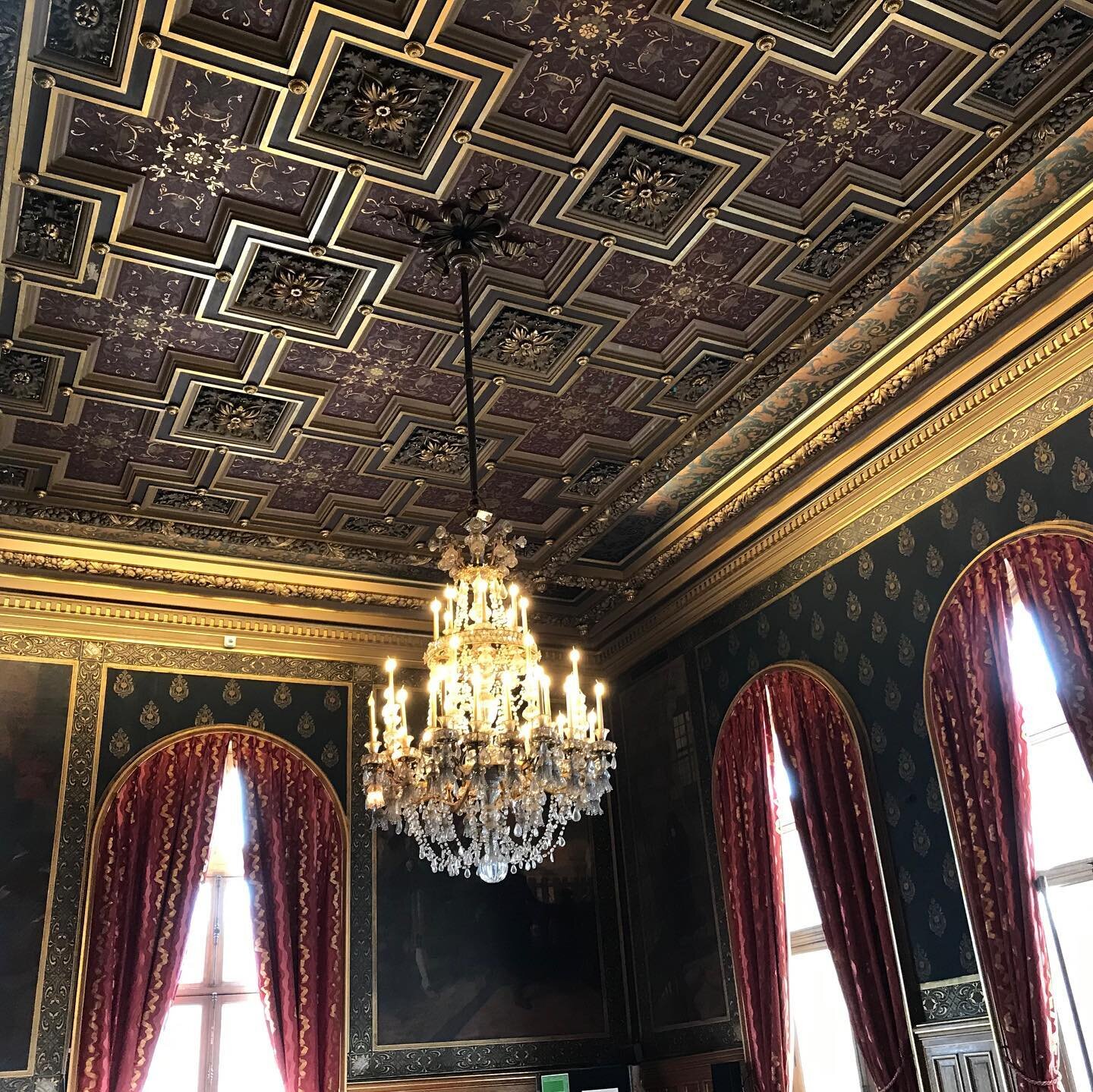
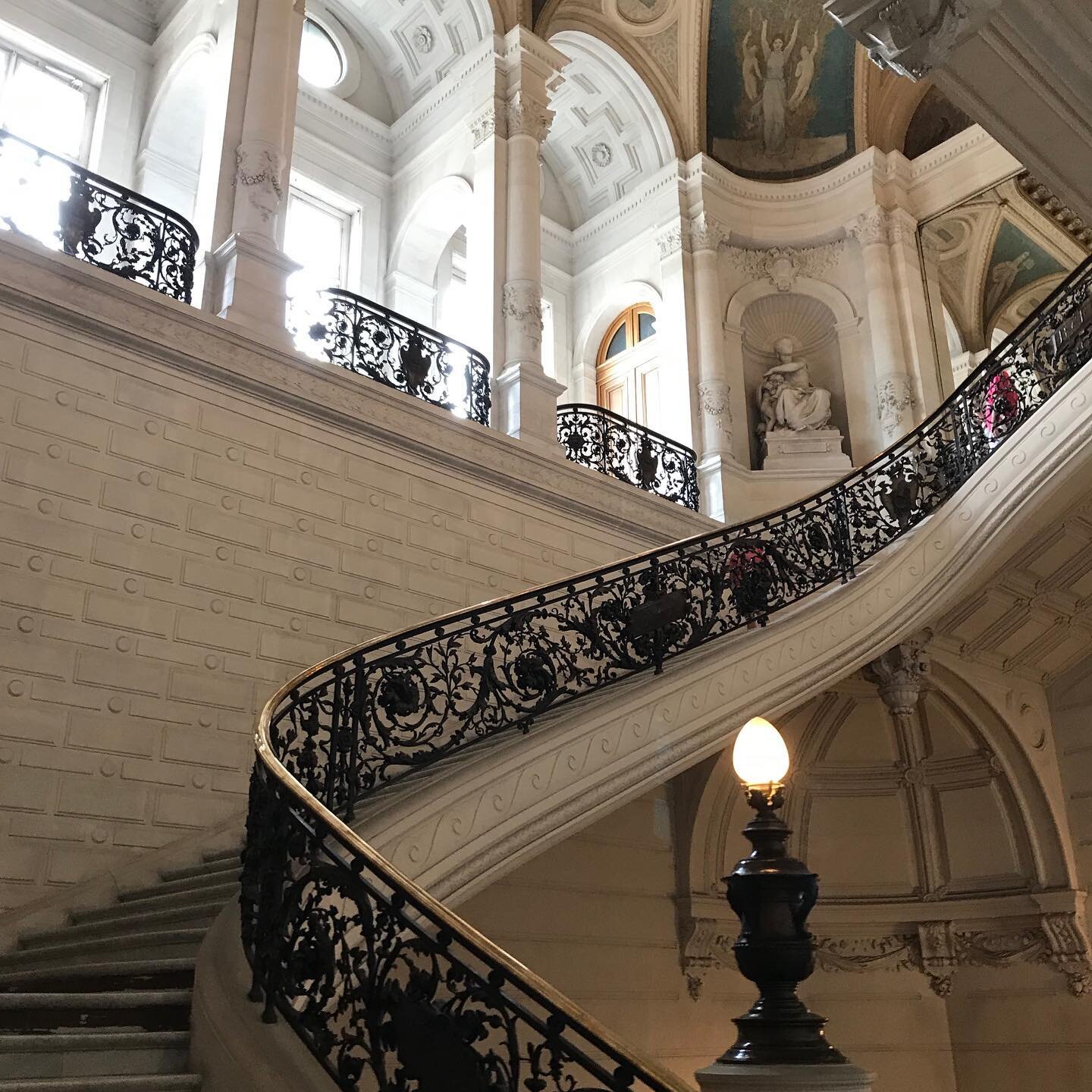
Hotel de Ville
All twenty “arrondissements" of Paris have their own city hall (who said the French like their bureaucracy) but this is the main one. Today, we enter the "salle du conseil" (council meeting room) where good or bad decisions get made, or not. Who knows? I don't do politics, only history!
One fully appreciates the magnificence of the Hotel de Ville knowing it burnt down during the Paris Commune of 1871. Other buildings (such as the Tuileries Palace) were subjected to the same fate, sadly, they were not rebuilt...
Today, we walk up the stairs and the first gallery gives a glimpse of tomorrow’s post: the main reception hall and more.
Chandeliers, gilded walls, ceilings covered with art. Nope, this is not Versailles! Though the main reception hall of the Hotel de Ville was meant to look like Louis XIV’s beloved Hall of Mirrors, no one can rival the Sun King. So you could say the Hotel de Ville has a Versailles Complex :)
When the Hotel de Ville burnt down during the 1871 Paris Commune, it’s not just the building built and extended by Kings François I, Henry IV and Louis XIII that was lost. Unfortunately, the city archives went up in smoke as well. Precious and valuable information on the 1789 Revolution vanished...
Today we look up to the ceilings in the Hotel de Ville.
« The Triumph of Art » by Léon Bonnat, depicts a man holding a flame and riding Pegasus, the white winged horse that is trampling over ignorance and savagery.
« The Parisian Muses » by Jules Lefebvre shows the muses of Tragedy, Comedy, and Music floating in the air. The muse in red was looking right at the camera when I took the picture, she might be the muse of tour guides…
It goes without saying the Hotel de Ville’s history is inextricably connected to the history of France. Many important events took place here, from the middle ages to each of the four Revolutions France has undergone and up to the liberation of Paris after the occupation during WWII.
On 25 April 1792, the "Place de l'Hôtel de Ville" (then called « Place de Grève ») was the setting of the very first execution with the guillotine. It was far from being the last one and the guillotine will spring up in other spots in Paris.
On the facade, there are over one hundred statues depicting historical figures as well as allegorical representations. I was surprised to see more statues in the inner court.
